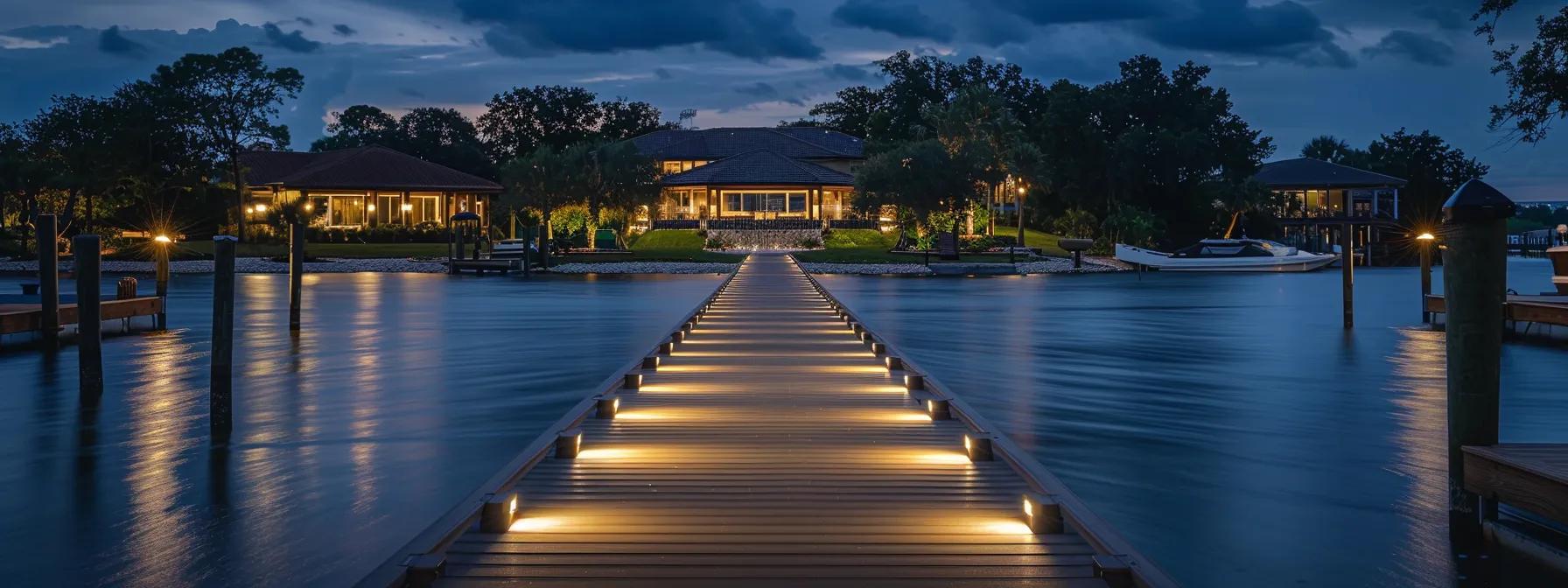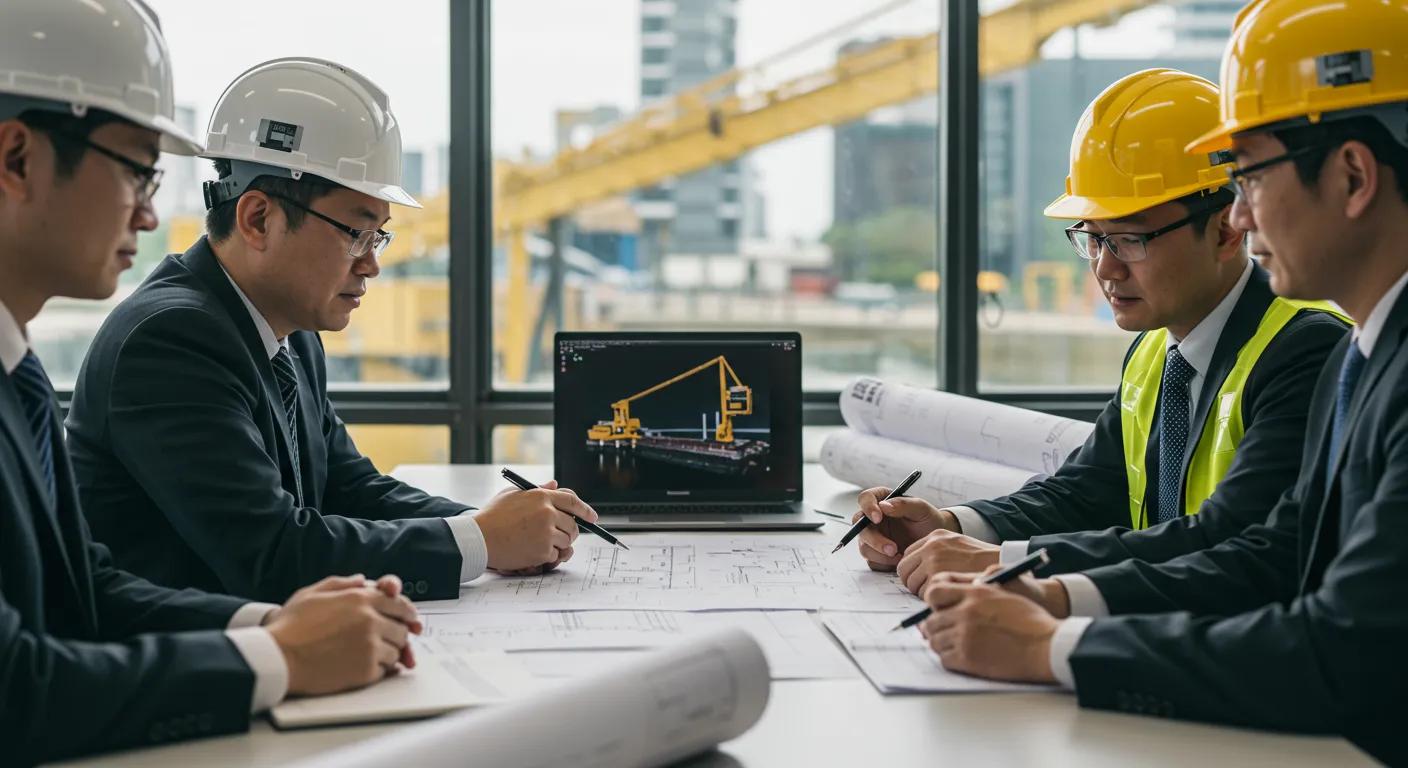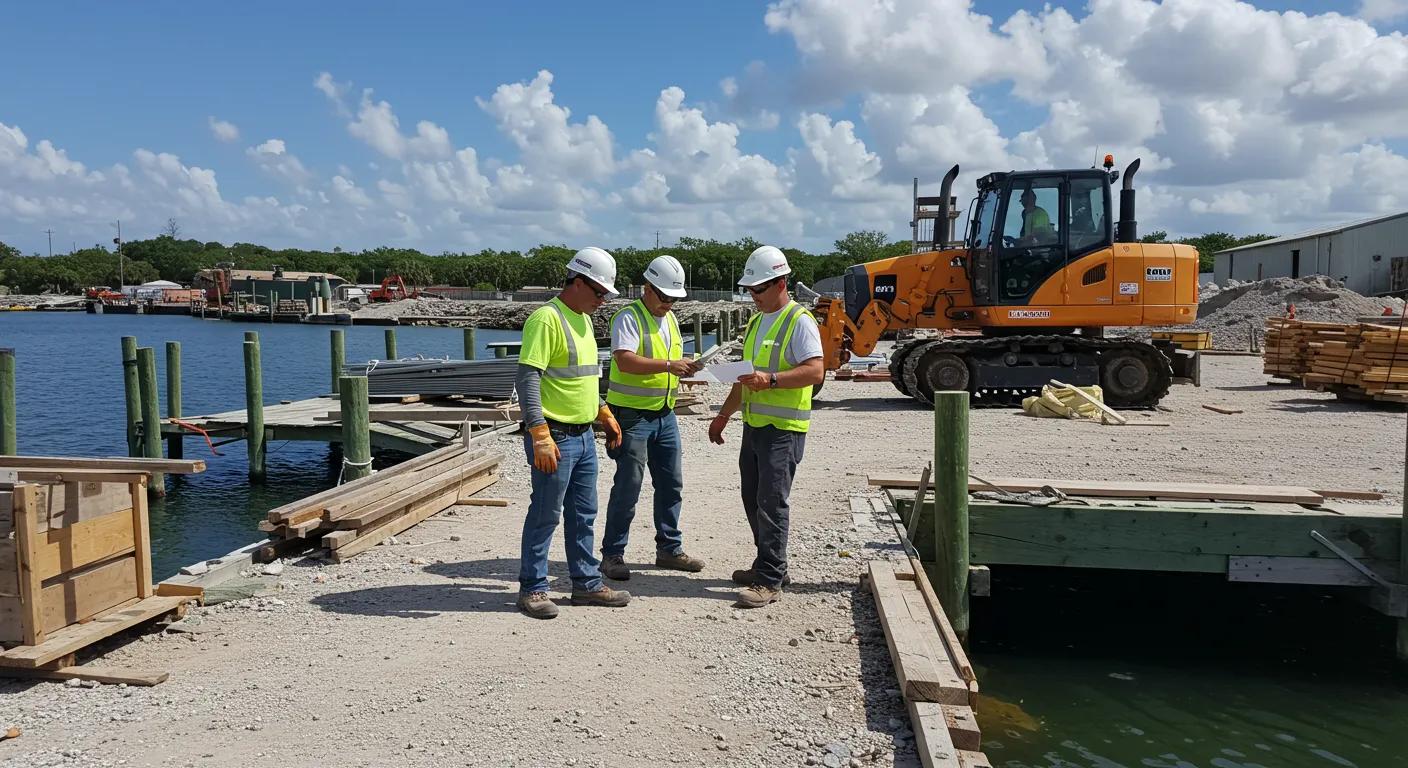Understanding Costs: What to Expect When Building a Custom Dock for Your Property
Welcome to this comprehensive guide on custom dockconstruction project spending. When planning for a dock that complements your waterfront property—whether for recreational boating, entertainment, or enhancing your lakeside appeal—understanding the costs involved is critical. This guide covers average spending, pricing per square or linear foot, and key factors such as material choices, labor, site conditions, and permit fees. It is designed for homeowners who want to make informed decisions when hiring dock builders and contractors. Whether you plan to build a basic structure or a high-end custom design with premium features, knowing potential expenses will help you plan accurately and avoid surprises.
How Much Should I Expect to Spend on a Custom Dock Construction Project: Initial Price Ranges
Before beginning any dockconstruction project, it is essential to understand the financial commitment. Costs vary widely based on size, materials, design complexity, and local labor rates. This section summarizes average expenditures, minimum and maximum budgets, and offers comparisons between basic and high-end constructions.
Average Custom Dock Construction Project Spending
For residential dockconstruction projects, average spending typically ranges from US$25,000 to US$75,000. A modest floating dock might cost around US$30,000, while more intricate designs with premium materials and custom features could exceed US$75,000. Factors driving costs include material quality (such as hardwoods or composite decking), dock length, and additional installations like lighting, electrical systems, or boat lifts. Knowing these averages helps when comparing estimates from different dock builders.
Minimum and Maximum Spending for Dock Projects
Basic dock projects using standard materials like pressure-treated pine can start at approximately US$15,000, adequate for simple watercraft access. Conversely, high-end docks using premium materials such as tropical hardwoods, stainless steel fasteners, and integrated electrical systems can exceed US$100,000. The choice between minimum and maximum spending depends on your dock’s intended use, desired longevity, and whether you prefer lower maintenance or enhanced aesthetics.
Dock Spending Per Square Foot
Calculating cost per square foot provides a detailed cost analysis. Typically, dockconstruction costs range between US$50 and US$150 per square foot. For example, a 300-square-foot dock might cost between US$15,000 and US$45,000. This calculation includes decking and structural supports (e.g., pilings and surface materials). Local material costs and customization may alter these figures, making it a useful metric when comparing contractor quotes.
Dock Spending Per Linear Foot
This metric is especially useful for long, narrow docks. On average, spending ranges from US$500 to US$1,500 per linear foot, depending on whether the dock is floating or fixed (piling type), design complexity, and construction materials. A 40-foot floating dock might cost between US$20,000 and US$60,000. Carefully reviewing estimates to ensure alignment with these industry averages can prevent unexpected charges.
Spending on a Basic Dock Versus a High-End Structure
A basic dock uses standard materials such as pressure-treatedwood or basic composites and minimal electrical components. Its focus is functionality with lower costs. In contrast, a high-end dock incorporates premium materials like tropical hardwoods, advanced composites, stainless steel fixtures, and added features like underwater lighting and custom railings. While high-end docks cost significantly more per square or linear foot, they offer enhanced durability, visual appeal, and long-term savings in maintenance.
Key Factors Influencing Your Custom Dock Construction Project Budget
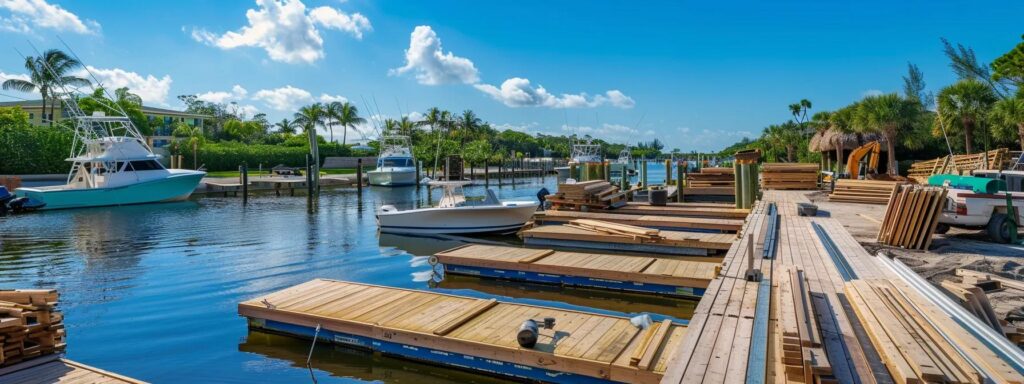
Several factors drive the overall budget of a custom dock project. Understanding these elements enables better planning and negotiation with contractors:
Dock Type and Its Impact on Project Spending
The selected dock type—whether floating, piling, pipe, crib, or suspension/cantilevered—substantially influences costs. Floating docks, using pontoons and attachable decking, often have lower material costs but may require more maintenance. Piling docks, which use driven supports, are generally more expensive due to the engineering required to withstand water currents and soil conditions.
Dock Size and Layout: How They Affect Overall Project Spending
Larger docks generally cost more but the design layout can optimize material use. A linear dock along a straight shoreline requires fewer supports compared to a curved design with multiple extensions. Optimizing layout reduces material waste and minimizes labor hours, helping contain the budget.
Material Choices and Their Influence on Construction Spending
Material selection—from pressure-treatedwood and hardwoods to composites, aluminum, concrete, or vinyl—greatly influences both the initial cost and long-term maintenance. High-quality hardwoods or aluminum may cost more upfront but offer durability and reduced maintenance costs compared to cheaper options like pine or basic composite alternatives.
Labor and Installation: A Significant Portion of Project Spending
Skilled labor, including design, permitting, construction, and specialized installations (like electrical systems or precise piling work), is a major part of the expense. Local wage rates and the complexity of the installation (such as drilling for pilings or working in challenging environmental conditions) add to overall costs. Detailed, itemized contractor quotes help ensure transparency in labor costs.
Site Conditions and Environmental Factors That Alter Project Spending
The characteristics of your waterfront—water depth, soil stability, tidal influences, and local climate—directly impact construction costs. A dock built on a calm, shallow lake with stable soil is less expensive compared to one on a choppy, deep waterfront with rocky substrates. Additional requirements like erosion control or shoreline modifications can increase costs. Regulatory fees, including permits and environmental impact assessments, also need to be included in the budget.
Estimating Spending for Different Custom Dock Types
Different dock types come with distinct cost structures. This section provides spending estimates for various dock types to aid in informed decision-making:
Floating Dock Project Spending
Popular for their flexibility and ease of installation, floating docks use buoys or pontoons coupled with deck panels. They are generally at the lower end of the cost spectrum, with spending typically between US$25,000 and US$50,000. However, due to exposure to water and weather, maintenance may be required more frequently.
Piling Dock Construction Spending
Piling docks require vertical supports driven into the waterbed, making them ideal for deeper or turbulent water conditions. They are more expensive due to higher engineering requirements and specialized labor, with costs potentially ranging from US$50,000 to over US$100,000 depending on dock length and the number of pilings used.
Pipe Dock Project Spending
Pipe docks, typically built using metal or fiberglass pipes, offer a modern and minimalist design. They provide a mid-range option between floating and piling docks, with costs generally between US$30,000 and US$70,000, influenced by the dock’s length and complexity.
Crib Dock Construction Spending
Constructed through interlocking logs or timbers, crib docks provide robust structural support and a traditional aesthetic. Their cost varies with the price of quality timber and labor, typically ranging from US$40,000 to US$90,000, with natural charm balanced against modern engineering.
Suspension or Cantilevered Dock Project Spending
These innovative docks appear to float with minimal supports and often use advanced materials such as reinforced composites or aluminum. Due to precise engineering and custom design elements, costs are higher, typically ranging from US$75,000 to over US$150,000, making them a striking focal point for waterfront properties.
Additional Custom Dock Construction Project Expenditures to Consider

Beyond basic construction, additional expenditures may elevate overall costs. Homeowners should account for items such as permits, accessories, and site modifications:
Permit and Regulatory Fees for Dock Construction
Permit fees, necessary inspections, and environmental assessments vary by location, generally costing from a few hundred to several thousand dollars. These fees protect the structure and ensure regulatory compliance, making them a crucial component of the budget.
Spending on Dock Accessories and Custom Features
Enhancements like built-in seating, custom railing systems, boat lifts, or integrated storage add functionality and visual appeal. These features can typically add an extra 10% to 30% to the base construction cost. Prioritizing accessories that serve your dock’s purpose helps keep additional expenses manageable.
Electrical and Lighting Installation Spending
Incorporating electrical systems such as wiring, lighting, and electrical panels improves safety and convenience. This expense usually adds between US$2,000 and US$10,000 depending on project scale and the extent of energy-efficient options like LED lighting.
Potential Spending for Shoreline Modifications or Seawalls
Modifications such as building seawalls, bulkheads, or drainage systems to control erosion are sometimes necessary, particularly in areas with high tides or frequent storms. Such modifications can cost between US$5,000 and US$20,000 depending on the situation.
Debris Removal and Site Cleanup Spending
Proper cleanup after construction is necessary to dispose of materials and ensure safety. Cleanup costs generally range from US$1,000 to US$5,000 and should be included in the overall planning to avoid unexpected expenses.
Comparing Material Spending for Your Custom Dock
Choosing the right materials not only affects the dock’s appearance but also its long-term maintenance costs. The table below summarizes common materials used in dockconstruction.
| Material | Average Cost Increase (%) | Maintenance Frequency | Durability (Years) | Key Benefit |
|---|---|---|---|---|
| Wood Decking | Baseline | Annual to bi-annual | 10-15 | Natural aesthetic, ease of repair |
| Composite Decking | +20% to +40% | Minimal (every 5-10 years) | 25-30 | Low maintenance, long-lasting |
| Aluminum | +30% to +50% | Virtually none | 30-40 | Corrosion resistance, modern look |
| Concrete | +40% to +60% | Minimal | 40+ | Extreme durability, structural strength |
| Vinyl Decking | +20% | Low (occasional cleaning) | 20-25 | Weather resistance, consistent appearance |
This comparison helps you weigh initial cost against ongoing maintenance, ensuring your choice aligns with both your budget and performance expectations.
Managing Your Custom Dock Construction Project Budget Effectively
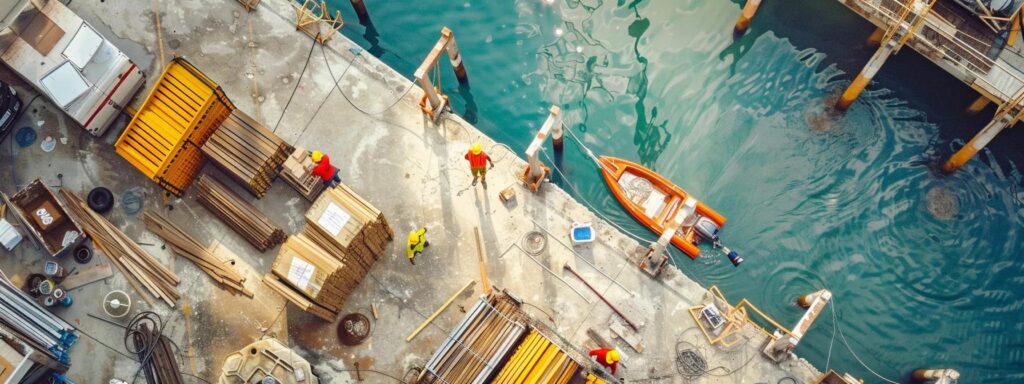
Effective budget management ensures your dock project stays on track financially while meeting your aesthetic and functional goals. Consider these strategies:
Obtaining Multiple Quotes From Dock Builders
Requesting detailed quotes from at least three reputable dock builders allows you to compare material quality, labor costs, timelines, and warranties. This practice not only helps secure competitive pricing but also exposes variations in design approaches and additional services.
Understanding What Is Included in a Dock Construction Quote
Examine each quote carefully to verify that it itemizes costs for materials, labor, equipment rental, and permit fees. Clarifying what is included prevents unexpected expenses later and streamlines the decision-making process.
Planning for Potential Hidden Construction Expenses
Even the best-planned projects can encounter unforeseen costs such as additional grading or environmental challenges. Allocating a contingency fund of 10% to 20% of your overall budget provides a financial cushion against these unexpected expenses.
Long-Term Maintenance Spending Associated With Different Dock Materials
Remember that lower initial costs may lead to higher long-term expenses if the materials require frequent maintenance. Compare the anticipated maintenance costs of wood versus composite, aluminum, or vinyl options to ensure your project remains economically sustainable over time.
DIY Dock Construction Versus Hiring Professional Builders: Spending and Safety
While DIY projects may appear cost-effective initially, the risk of improper installation and subsequent repairs can lead to higher expenses and safety concerns. Professional dock builders provide expertise and ensure that all safety standards are met, often proving to be a wise long-term investment despite higher upfront costs.
Frequently Asked Questions
Q: What are the primary factors that affect dockconstructioncosts? A: Costs are influenced by the type of dock (floating, piling, etc.), its size and layout, material selections, labor, site conditions, permit fees, and any custom features. Careful planning and obtaining multiple detailed quotes are essential.
Q: How do material choices for docks impact long-term maintenance expenses? A: For instance, wood decking might be cheaper initially but requires regular sealing and repairs, whereas composite, aluminum, or vinyl options, though more expensive upfront, generally have lower maintenance costs.
Q: Is it necessary to obtain permits for dockconstructionprojects? A: Yes, permits and regulatory approvals are critical. They ensure legal and safe construction, with fees varying based on your location.
Q: Can a floating dockbe a cost-effective option for homeowners? A: Floating docks typically have lower initial costs and are suitable for calmer waters. However, they may need more frequent maintenance due to ongoing exposure to water and weather changes.
Q: What should I consider when choosing between DIY dockconstructionand hiring professionals? A: Consider your skill level, project complexity, safety issues, and long-term reliability. Professional builders may cost more initially but often reduce risks and future expenses.
Q: How do labor costs influence the overall budget for a dockproject? A: Labor is a major component, affected by local wages, project complexity, and required expertise. Detailed, itemized quotes help manage these costs effectively.
Q: What is the best method to compare dockconstructionquotes? A: Request detailed, itemized quotes from multiple reputable dock builders. Compare factors such as material quality, labor, permit fees, and additional features to make an informed decision.
Final Thoughts
Custom dockconstruction projects involve numerous variables—from the type of dock and chosen materials to labor, permits, and maintenance. By understanding the cost structure and comparing your options carefully, you can achieve a high-quality dock that meets your specific needs. With proper planning and a contingency fund in place, you can manage unexpected expenses while maximizing the long-term value of your waterfront property. Consider obtaining multiple quotes, scrutinizing all details, and selecting materials that balance initial costs with long-term durability.

